CARRION CROWS : Corvus corone
Where to see them : Widespread across West Dunbartonshire.They can be confused with younger rooks.
Also see CORVIDS / CROWS incl MAGPIES
The carrion crow is a clever bird! Although it can be wary of people, you may find it coming quite close for food. The one in the photo below lives above Renton. It recognises the car returning home and will wait patiently for a treat of fat balls. It has the strange habit of burying the fatballs under tufts of grass. Invariably these are found by other birds. Their nautural diet is carrion, insects, worms, seeds, fruit, eggs and any scraps.
They are usually seen singularly, but sometimes can be seen in pairs or small groups.
To distinguish carrion crows and younger rooks consider :
Adult Rooks are easy to identify thanks to the bare, greyish-white skin around the base of their bill. The rest of their plumage is all black.
A juvenile Rook, however, is similar to a Carrion Crow as it doesn't develop the bare bill-base until its second calendar year. If you're not sure, look for the Rook's characteristic flat forehead, peaked crown, ruffled drooping belly feathers and feathered thighs.
Rooks also have a straighter, more pointed bill, unlike the Carrion Crow's thicker, blunter and more curved bill. [BTO].
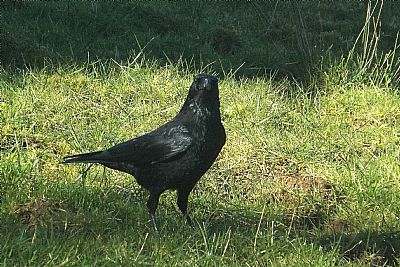
This bird is several years old and has visited a particular home near Renton to get handouts for years. In recent years it been accompanied by two smaller younger birds, probably its own chicks, since now matured. Photographic records suggest, presuming that this is the same one, that in 2024 it was 12 years old. It disappeared in the summer of that year. The web notes that a typical lifespan is just 4 years old. Perhaps the rural environment and hand-outs in bleaker times gave this one a good chance of a longer happier life. We like to think so.
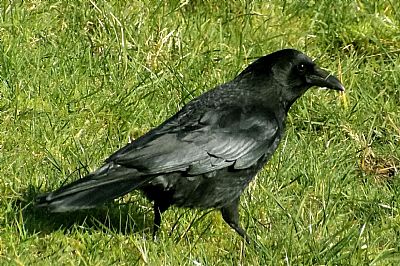
Carrion crows are often seen in groups, but not large flocks as other crows. The one in this picture appears to be one of the now matured offspring of the crow shown above it. It is now fully grown, but not quite as big as its parent bird.
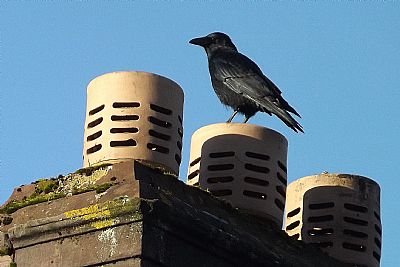
A carrion crow on a chimney pot. At this distance and lighting conditions, it can so easily be confused with other crows as described below.
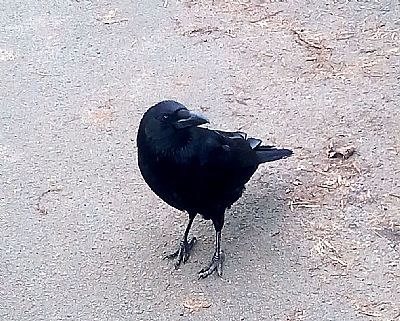
While rooks tend to gather in large flocks, carrion crows are usually in small groups or by themselves. This one seen in Glasgow is perhaps more used to people and opportunitistic feeding in a park, so was in a group and followed people around for hand-outs. You can clearly see the feathered base to its beak ( in contrast to that of a young rook).
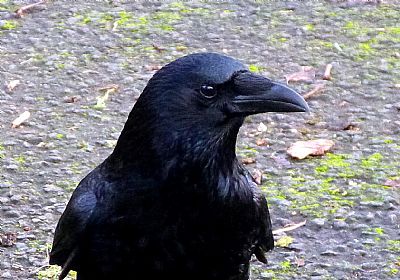
As these crows mature, they display a more prominent area at the base of their beaks. This should not be confused with that of rooks when still approaching maturity. The beaks of carrion crows are also heavier and less elongated. January.
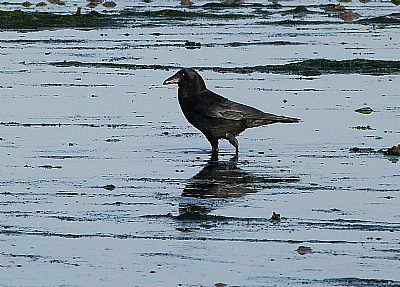
A carrion crow joins many other birds as the tide recedes on the Clyde one a glorious evening in early spring.
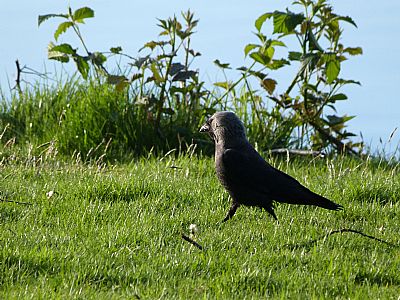
Looking for breakfast near Dumbarton Castle.
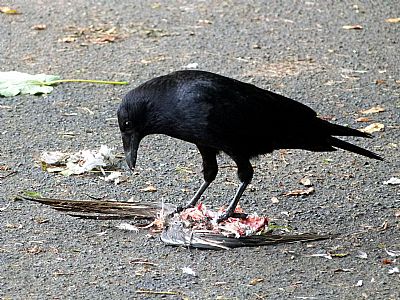
Us humans may find some of this unsavoury, but this is what carrion crows like for lunch. Here we see one eating the remains of a gull. (Gulls too scavange not only bins or your fish and chips, but also the remains of other dead creatures). Thank goodness for such crows that clean up the remains of others. They do not only create mess as they attack the packaging of discarded ready meals of humans.

